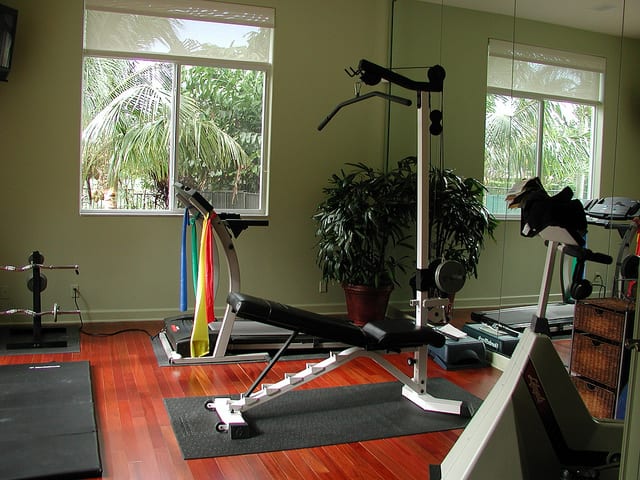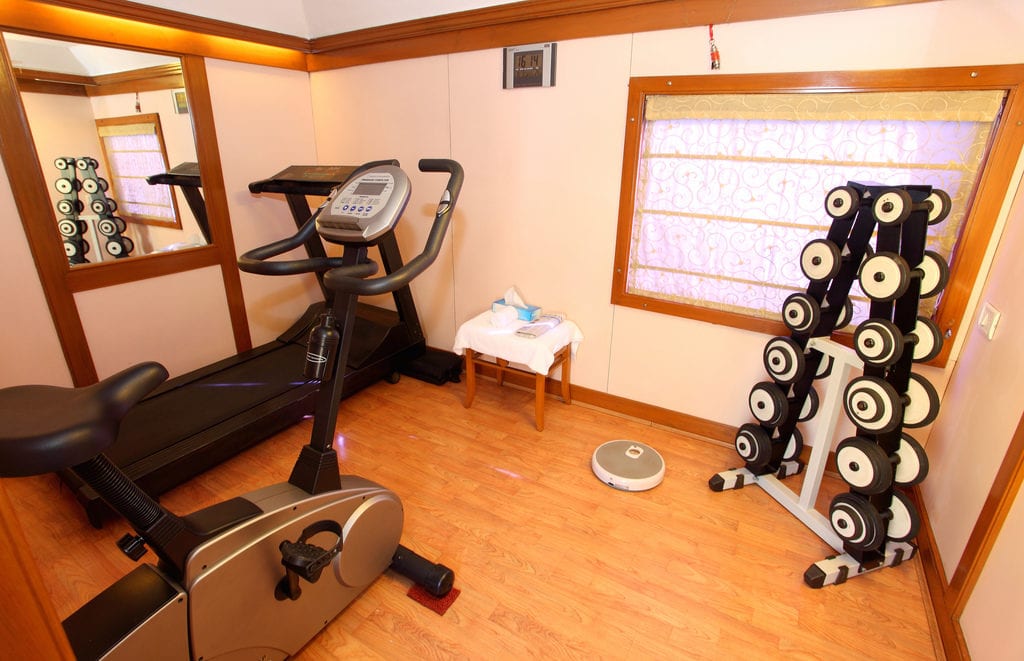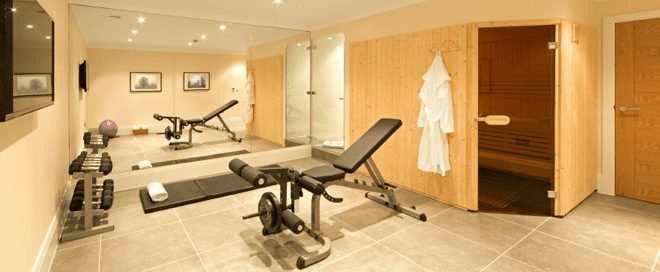Does your New Year’s resolution involve exercising more frequently? A gym membership means having to travel to the gym, which can be off-putting for many people with busy schedules. Not to mention, the crowds flooding most clubs just after the New Year can be impossible to manage.
The free, less crowded alternative, exercising outdoors, is dependent on the weather, which can discourage you from working out if it is too cold or hot.
If you are serious about getting back in shape, consider converting your unused basement into your own home gym. Although this may seem like a difficult and costly process, we have put together a list of steps for making your home gym ideas a reality.
Step 1: Basement Waterproofing
The first step of renovating your basement into a gym is to eliminate any water leaks. Water damage could ruin your entire project and destroy costly gym equipment. Unless you are confident in your DIY abilities, we suggest hiring a professional to ensure all leaks are sealed. Seeking outside help can go a long way towards identifying other issues along the way, such as mold damage. Simply patching areas without solving mold problems will lead to major repairs in the future.
Step 2: Wall & Floor Covering
Depending on if you are tearing the walls out and starting from scratch, you can either move on to framework or start looking at paints and flooring options. If framing is your next step, insulation and sheetrock are pivotal. You do not want your basement gym to be too drafty or weather-sensitive. Adding insulation will make heating and cooling the area much easier, although it will probably involve hiring a professional for construction expertise.
If the basement is already insulated, you can move on to the fun parts of remodeling your basement. Choose paint colors and schemes for your basement, but remember that, although hot pink may seem like an upbeat and fun choice, you are going to be looking at the colors every day.
For flooring, consider what will work best with the exercise equipment you typically use. Tile is easy to clean and less expensive, but if weights are dropped, the tiles can crack and shatter. In the long run, this may end up costing you and taking your valuable time for repairs.
Wood flooring is an aesthetically pleasing choice but carries the worry of scratching or warping over time. Dropped dumbbells can, of course, speed deterioration.
Carpeting, padding, and rubber flooring are your best all-around options for home gym use. In addition to preventing floor damage, these choices help mute the gym noises from the rest of the house.
In addition to carpeting, acoustic wall panels and ceiling tiles are options you should strongly consider in building your basement gym. Music, weights, and machines can all be very loud. These noise-cancelling installations with keep you from disrupting your family with typical gym noises.
Step 3: Ventilation & Lighting
Consider proper ventilation and light when starting the renovation of your basement. Make sure to check building codes before beginning any major steps such as adding windows.
If your basement is dark and stuffy, working out is going to become a dreaded part of your day. Creating a bright and airy space will help you look forward to exercise in your home gym.
Although adding windows may not be possible for you, recessed or freestanding lights can help brighten your basement space. As freestanding light fixtures can get in the way and pose a safety risk, recessed lighting is the preferred lighting option. In lieu of windows, mirrored walls can brighten up your home gym and make the space seem bigger without breaking the bank.
When considering how to properly ventilate your home gym, there are two options. Ceiling and freestanding fans are inexpensive ways to encourage air circulation but do not give you the ability to control the temperature in your basement gym. If this is a concern, consider installing a separate HVAC system in the basement. This will provide you with a more comfortable environment to exercise.
Step 4: Measuring Usable Space
Do not look at total space when planning your home gym; look at what area will actually be useable. Odd angles or inconveniently placed pillars will intrude in your gym space. Measure only the useable space and take into consideration ceiling height. A good rule of thumb for measuring space is to give exercise equipment like treadmills and ellipticals about 30 square feet to operate safely. Machines like the exercise bike and freestanding weights will take less space.
Step 5: Choosing The Right Gym Equipment
Once you have planned the basic layout of your home gym, take into consideration what equipment you are going to actually use. Don’t waste money and space on dust-gathering machines. While a rowing machine may seem like a fun way to exercise, it takes a serious commitment to choose a machine that takes up so much space.
Invest in equipment that you will get continuous use from. Although machines like treadmills, ellipticals, exercise bikes, and weight machines are very popular gym gear, choosing the right equipment should be based on what you prefer to use in your workouts.
Step 6: Picking Gym Extras
Once you have the exercise machines picked out, you can start considering the extra space available for use. Extra features go a long way towards keeping your space exciting and you motivated.
If you enjoy listening to music while exercising, invest in a stereo system and avoid tangled, uncomfortable headphones.
Most gyms include televisions to provide a fixed point and entertainment for long cardio sets. Watching your favorite television shows or sports can make your exercise routine go by quickly and more enjoyably.
Need a simple, inexpensive option? Try adding a mini fridge and a towel rack. These may seem like unnecessary features, but having small comforts will make you more likely to continue using your basement gym.
Building a home gym in your basement is a convenient way to ensure that you keep your weight loss New Year’s resolution. In addition to saving you the time of traveling to your local gym, it can even save you money over time. Gym memberships add up quickly and discourage many people from continuing their fitness plan in the long run. Consider remodeling your basement into your own personal fitness center to keep your workout schedule on track this year.




